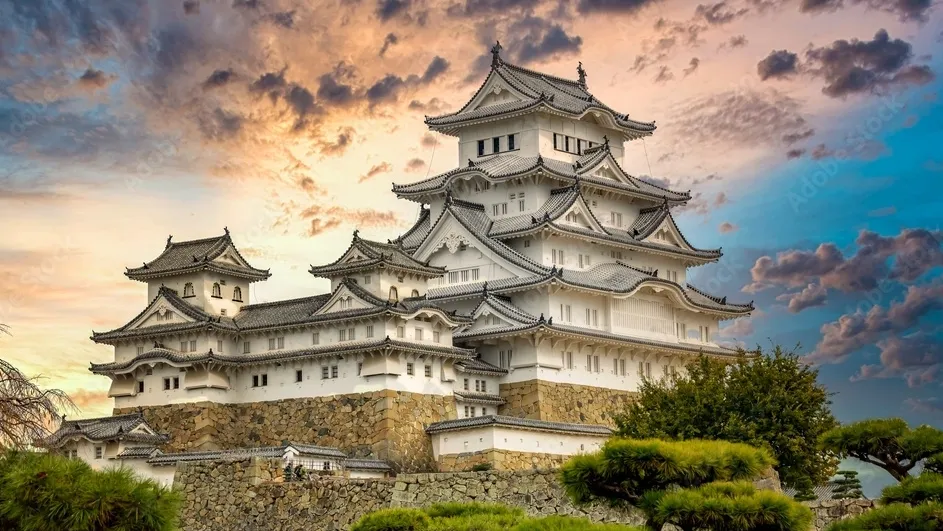Himeji Castle, also known as Himeji-jo, stands as a quintessential embodiment of Japanese feudal architecture and historical significance. Nestled in the city of Himeji, Hyogo Prefecture, Japan, this majestic castle embodies elegance, resilience, and Japan’s rich cultural legacy.
The roots of Himeji Castle trace back to the 14th century, when a hilltop fortress was erected on the site. However, it was during the 17th century, under the reign of Ikeda Terumasa, a daimyo (feudal lord) of the early Edo period, that the castle took its current form. Construction commenced in 1601 and spanned several years, culminating in the magnificent structure that graces the landscape today.

Himeji Castle is celebrated for its architectural splendor, earning it the moniker of “White Heron Castle” owing to its pristine white façade and graceful design. Representing the hirayama-style architecture, it showcases a sophisticated defensive system constructed on a plain rather than atop a hill or mountain.

The castle’s strategic defensive layout features meandering pathways, numerous gates, and extensive stone walls. Its intricate design intentionally bewilders potential invaders, complicating their navigation through the labyrinthine network of passages. Adding to its defensive prowess are ingenious elements such as murder holes, allowing defenders to drop rocks or boiling water on trespassers.

Throughout centuries of Japanese history, Himeji Castle has stood as a witness to pivotal moments of war, political shifts, and societal progress. Unlike many other castles of feudal Japan, it remarkably endured turbulent times largely unscathed, cementing its status as one of the few original surviving castles from that era.
In Japan’s feudal past, castles symbolized power and served as vital military assets. Positioned strategically, Himeji Castle controlled key transportation routes and safeguarded its region. Its formidable presence and intricate defenses made it a formidable obstacle for potential attackers.
As Japan moved from feudalism to the Meiji era and beyond, Himeji Castle underwent transformations. Evolving from a military stronghold, it became a cherished symbol of cultural heritage and national pride. Its designation as a UNESCO World Heritage Site underscores its significance as a cultural treasure for present and future generations.
Over the centuries, Himeji Castle has undergone numerous renovation projects, with the most recent major restoration completed in 2015. These efforts aimed to safeguard its structural integrity, ensuring that its historical and architectural importance can be appreciated by generations to come.

Today, Himeji Castle warmly welcomes visitors from across the globe, eager to delve into its historical corridors and immerse themselves in its cultural ambiance. The castle complex encompasses multiple gates, baileys, and auxiliary structures, offering a comprehensive glimpse into the rich tapestry of Japanese castle architecture.

One of the most magical times to experience Himeji Castle is during cherry blossom season. The castle, framed by the delicate pink blooms of cherry blossoms, presents a breathtaking sight that enchants all who visit. The annual cherry blossom festival draws crowds eager to witness this natural spectacle unfold in the castle’s shadow.
While the exterior is a visual feast, the interior of Himeji Castle offers a captivating journey into Japan’s feudal history. Visitors can ascend the main keep, exploring its various levels and chambers that once hosted samurai warriors, lords, and their families. Exhibits and displays offer insights into the castle’s rich history, architectural marvels, and cultural significance.
Himeji Castle stands as a profound testament to Japan’s vibrant history, architectural ingenuity, and cultural legacy. Its enduring stature and UNESCO World Heritage designation make it an essential destination for those seeking to immerse themselves in the captivating world of Japanese feudal castles. As the “White Heron Castle” continues to grace the landscape, it beckons visitors to connect with Japan’s illustrious past and marvel at the brilliance of its architectural heritage.

